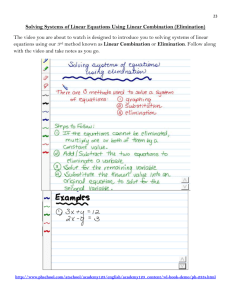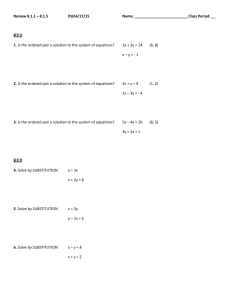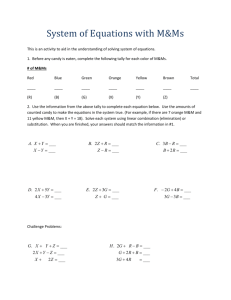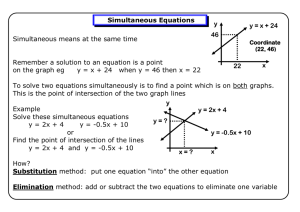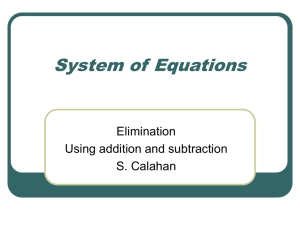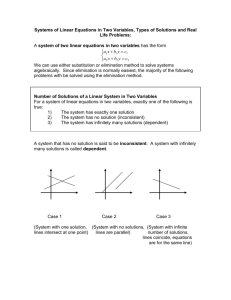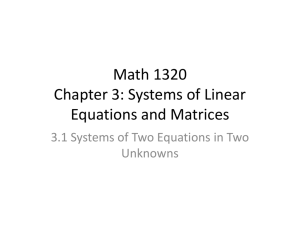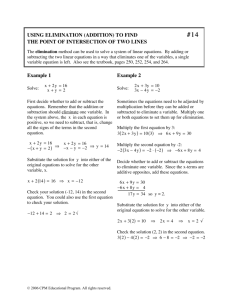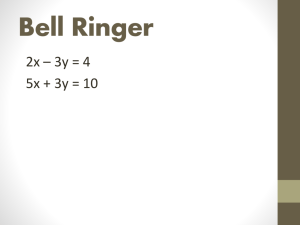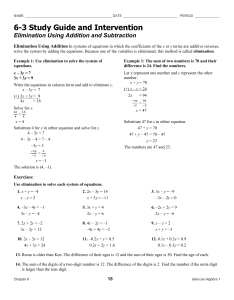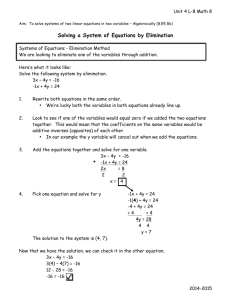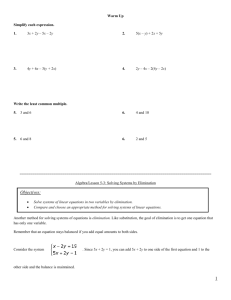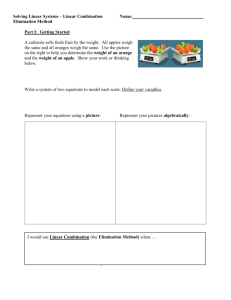Day 4 - Lesson - Solving By Elimination Day 1
advertisement
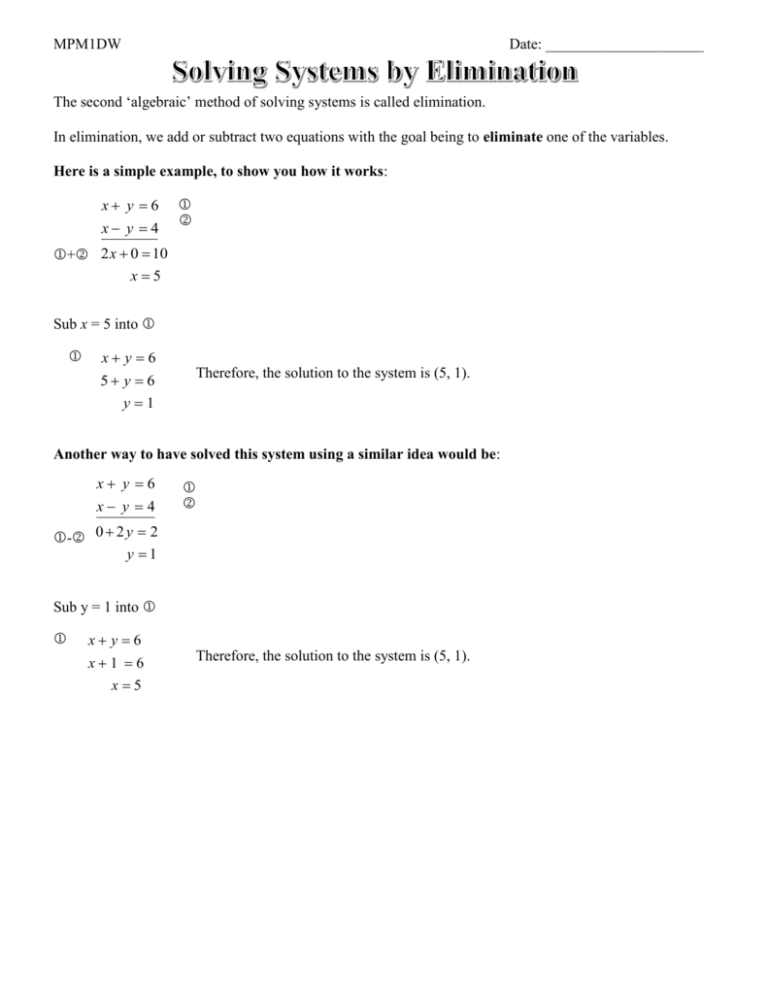
MPM1DW Date: _____________________ The second ‘algebraic’ method of solving systems is called elimination. In elimination, we add or subtract two equations with the goal being to eliminate one of the variables. Here is a simple example, to show you how it works: x y 6 x y 4 + 2 x 0 10 x5 Sub x = 5 into x y 6 Therefore, the solution to the system is (5, 1). 5 y 6 y1 Another way to have solved this system using a similar idea would be: x y 6 x y 4 - 0 2 y 2 y 1 Sub y = 1 into x y 6 x1 6 x5 Therefore, the solution to the system is (5, 1). Steps for solving equations by using elimination: 1. Equations must be lined in the form Ax By C (Rearrange if necessary) Dx Fy G 2. If A and D, or B and F are the same coefficient, subtract the two equations. If A and D, or B and F are opposite coefficients, add the two equations. *This step will eliminate a variable* 3. Solve the simple equation for the remaining variable. 4. Sub the solution from step 3 back into equation or . Then, solve for the other unknown. 5. State your solution in (x, y) form. 6. Check if asked Ex 1 Solve the following systems of equations by elimination a) 3 x 2 y 19 b) 2a 3b 7 5x 2 y 5 5b 2a 9 c) 4c 3d 8 8 d 4c
